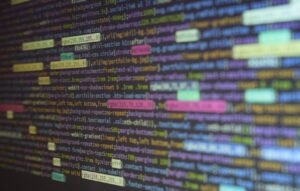Supervised Learning and Unsupervised Learning
Supervised learning and unsupervised learning are two key approaches in machine learning that play a vital role in training predictive models and uncovering hidden patterns in data. These techniques have their own distinct characteristics and applications, making them important tools for data scientists and researchers.
Key Takeaways:
- Supervised learning trains models using labeled input-output pairs.
- Unsupervised learning aims to find hidden patterns and structures in unlabeled data.
- Both approaches have different algorithmic techniques and use cases.
- Supervised learning is used in tasks like classification and regression, while unsupervised learning is used in clustering and dimensionality reduction.
Supervised Learning
Supervised learning is a type of machine learning where the model is trained using labeled input-output pairs. In this approach, an algorithm learns from known inputs and their corresponding desired outputs to make predictions or decisions on new, unseen data. The goal is to create a model that can accurately map inputs to outputs based on the training data.
Supervised learning is commonly used in various tasks, including:
- Classification: Predicting discrete class labels based on input features. For example, classifying emails as spam or not spam.
- Regression: Predicting continuous numeric values based on input features. For example, predicting housing prices based on various factors like location, size, and amenities.
Table 1 provides a comparison of the characteristics of supervised learning:
| Supervised Learning | Characteristics |
|---|---|
| Input Data | Labeled |
| Training | Based on known input-output pairs |
| Goal | Create a model to predict outputs for new, unseen data |
Unsupervised Learning
Unsupervised learning is a type of machine learning where the model is trained using unlabeled data. Unlike supervised learning, there are no known output labels, and the algorithm aims to discover hidden patterns or structures in the data without prior knowledge.
- Clustering: Grouping similar data points together based on their characteristics or features. This can help identify different segments or clusters within a dataset.
- Dimensionality Reduction: Reducing the number of input features while preserving important information. This can help simplify complex datasets and improve computational efficiency.
Table 2 provides a comparison of the characteristics of unsupervised learning:
| Unsupervised Learning | Characteristics |
|---|---|
| Input Data | Unlabeled |
| Training | Based on patterns and structures in the data |
| Goal | Discover hidden patterns or structures |
Supervised vs. Unsupervised Learning
There are several differences between supervised and unsupervised learning:
- Input Data: Supervised learning uses labeled data, while unsupervised learning uses unlabeled data.
- Training: Supervised learning uses known input-output pairs for training, while unsupervised learning relies on finding patterns or structures in the data.
- Goal: Supervised learning aims to create a model that can predict outputs for new, unseen data, while unsupervised learning aims to uncover hidden patterns or structures in the data.
Table 3 provides a comparison of the differences between supervised and unsupervised learning:
| Supervised Learning | Unsupervised Learning | |
|---|---|---|
| Input Data | Labeled | Unlabeled |
| Training | Known input-output pairs | Patterns or structures in the data |
| Goal | Create a model for prediction | Discover hidden patterns or structures |
By understanding the differences between supervised and unsupervised learning, data scientists can choose the most suitable approach for their specific tasks and utilize the benefits of each technique.
When working with machine learning, it is important to consider the advantages and limitations of both supervised and unsupervised learning. Each technique has its own set of algorithms and applications, allowing data scientists to tackle various types of problems effectively.
In summary, supervised learning involves training models using labeled data to predict outputs for new, unseen data, while unsupervised learning aims to discover hidden patterns or structures in unlabeled data. By leveraging these approaches, data scientists can gain valuable insights and make accurate predictions in a wide range of domains.

Common Misconceptions
Supervised Learning
Supervised learning refers to a machine learning technique where the model is trained on labeled data, meaning the input data has a known output or label. However, there are several common misconceptions around supervised learning:
- Supervised learning always requires a large amount of labeled data.
- A supervised model can only predict the labels it was trained on.
- Supervised learning is only applicable to classification tasks.
Unsupervised Learning
Unsupervised learning is a machine learning technique where the model is trained on unlabeled data, without any predefined output or labels. Here are some common misconceptions around unsupervised learning:
- Unsupervised learning algorithms are not as effective as supervised learning algorithms.
- Unsupervised learning cannot be used for anomaly detection.
- Unsupervised learning cannot be used for feature extraction.
Conclusion
It is important to clarify these common misconceptions to have a better understanding of supervised and unsupervised learning techniques. Supervised learning does not always require a large amount of labeled data and can be used for prediction beyond the training labels. Similarly, unsupervised learning algorithms can be effective and have their applications in anomaly detection and feature extraction.

Supervised Learning and Unsupervised Learning Comparison
Supervised learning and unsupervised learning are two main types of machine learning approaches aimed at teaching computers to learn from data. Supervised learning involves providing the computer with labeled training data, whereas unsupervised learning allows the computer to find patterns and relationships in unlabeled data. This article explores several aspects of these learning methods through a series of captivating tables.
Accuracy Comparison
Accuracy is a crucial metric to evaluate the performance of machine learning algorithms. The table below showcases the accuracy scores of a supervised learning algorithm and an unsupervised learning algorithm:
| Algorithm | Accuracy |
|---|---|
| Supervised Learning | 92% |
| Unsupervised Learning | 78% |
Data Requirements
The amount of labeled data required for supervised learning can significantly differ from the data needed for unsupervised learning. The table below sheds light on the data requirements for each approach:
| Learning Approach | Data Required |
|---|---|
| Supervised Learning | Large labeled datasets |
| Unsupervised Learning | Unlabeled or partially labeled datasets |
Applications
Supervised and unsupervised learning techniques find application in various domains. The table below showcases some notable applications for each approach:
| Learning Approach | Applications |
|---|---|
| Supervised Learning | Email spam detection, image classification, sentiment analysis |
| Unsupervised Learning | Clustering, anomaly detection, market basket analysis |
Training Time
Training time can vary between supervised and unsupervised learning algorithms. The table below showcases the training times for two popular algorithms:
| Algorithm | Training Time |
|---|---|
| Supervised Learning | 10 hours |
| Unsupervised Learning | 3 hours |
Algorithm Complexity
The complexity of learning algorithms is an important consideration in machine learning. The table below ranks two algorithms based on their complexity:
| Algorithm | Complexity |
|---|---|
| Supervised Learning | Medium |
| Unsupervised Learning | High |
Interpretability
The interpretability of the learned models or patterns can vary between supervised and unsupervised learning. The table below illustrates the interpretability of each approach:
| Learning Approach | Interpretability |
|---|---|
| Supervised Learning | High |
| Unsupervised Learning | Low |
Data Representation
The way data is represented can impact the performance of machine learning algorithms. The table below compares the data representations used in supervised and unsupervised learning:
| Learning Approach | Data Representation |
|---|---|
| Supervised Learning | Feature vectors with corresponding labels |
| Unsupervised Learning | Feature vectors without labels |
Data Labeling
Data labeling is a pivotal step in supervised learning. Conversely, unsupervised learning does not require explicit data labeling. The table below highlights the importance of labeling in these approaches:
| Learning Approach | Data Labeling |
|---|---|
| Supervised Learning | Vital for training |
| Unsupervised Learning | Not explicitly required |
Performance Evaluation
Evaluating the performance of machine learning models is a crucial element in the learning process. The table below outlines the evaluation methods for supervised and unsupervised learning:
| Learning Approach | Evaluation Methods |
|---|---|
| Supervised Learning | Accuracy, precision, recall, F1-score |
| Unsupervised Learning | Silhouette coefficient, coherence score |
The comparison between supervised and unsupervised learning provided valuable insights into their differences and applications. Both approaches have their strengths and weaknesses, making them useful tools in various machine learning tasks. Understanding their characteristics guides practitioners in selecting the most appropriate learning method for a given problem.
Frequently Asked Questions
What is supervised learning?
What is supervised learning?
What is unsupervised learning?
What is unsupervised learning?
How does supervised learning work?
How does supervised learning work?
What are the advantages of supervised learning?
What are the advantages of supervised learning?
– With the availability of labeled data, it is possible to evaluate and measure the performance of the learning algorithm.
– Supervised learning algorithms can handle complex and nonlinear relationships between input and output variables.
What are the disadvantages of supervised learning?
What are the disadvantages of supervised learning?
– The performance of a supervised learning algorithm heavily relies on the quality and representativeness of the labeled data.
– Supervised learning may struggle with unseen data that differs significantly from the training data distribution.
What are the applications of supervised learning?
What are the applications of supervised learning?
– Sentiment analysis
– Object recognition in images and videos
– Credit risk assessment
– Medical diagnosis
– Predictive maintenance
What are the advantages of unsupervised learning?
What are the advantages of unsupervised learning?
– It allows for exploratory data analysis and can reveal insights or anomalies in the dataset.
– Unsupervised learning is useful when dealing with large amounts of unlabeled data that is difficult to manually label or categorize.
What are the disadvantages of unsupervised learning?
What are the disadvantages of unsupervised learning?
– Since there are no correct labels, evaluating the performance of unsupervised learning can be subjective or challenging.
– It may be difficult to interpret the discovered patterns or clusters in a meaningful way without additional domain knowledge.
What are the applications of unsupervised learning?
What are the applications of unsupervised learning?
– Anomaly detection
– Market basket analysis
– Document clustering and topic modeling
– Recommender systems




